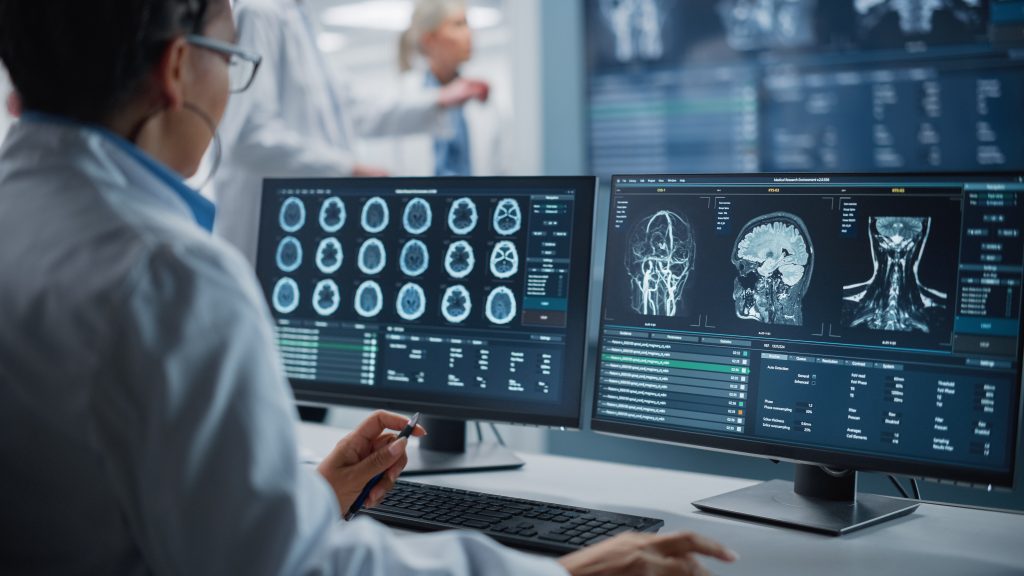
Developing a new drug requires an enormous investment of time and money. To guarantee the commercial sustainability of research into new products, pharmaceutical companies generally seek patent protection for their innovations, and these patents are often at the center of some of the largest transactions and contentious disputes in intellectual property.
Protecting new drugs and medicines through patents for these products is a core component of the IP strategy of most pharmaceutical companies. However, significant resources are also invested in developing the processes through which new candidate drugs and medicines are selected and tested, from the initial identification of drug targets through to the design of candidate compounds and subsequent clinical testing. Recently, much effort has been devoted in particular to developing AI tools for performing tasks such as designing candidate molecules and predicting their properties.
This article explores how the European and UK patent systems deal with the use of AI tools in the drug discovery process and offers some practical advice for companies innovating in this area.
Drug target identification
Drug discovery begins with identifying drug targets: molecules or other biological entities associated with a disease and whose behaviour the drug to be developed is intended to modulate.
Current case law indicates that both the European and UK patent offices treat identifying a drug target as a non-technical activity that does not in isolation constitute a patentable invention.
For example, appeal case T 2677/16 at the European Patent Office (EPO) related to a software-based approach for identifying drug targets. The appeal board decided that identifying a drug target was “merely a promising direction for future research” and was therefore a “discovery” (a category of ideas excluded from patentability under the European Patent Convention) rather than a patentable invention. This stood in contrast to “the invention of a drug, which would represent a technical purpose”.
At the UK Intellectual Property Office (UKIPO), a claim directed to “a method of identifying drug targets” was similarly found to be excluded from patentability in a decision BL O/163/07. The hearing officer reasoned that there was no “real world effect” achieved by the method as claimed: rather, the claim was considered to define “a method which may or may not find [a drug target], depending on, among other things, whether such a new drug target actually exists”. The hearing officer therefore found the claimed method to be excluded from patentability as a non-technical computer program.
These decisions show that both the EPO and the UKIPO are likely to treat improvements in the identification of drug targets as not inherently patentable. This does not mean that innovations in drug target identification are altogether excluded from patentability, but it indicates that applicants will need to be able to point to something other than identification of better drug targets to demonstrate the technical character of their invention. For example, a case for patentability might be made by arguing that the invention achieves an improvement in the efficiency of how the data structures involved in drug discovery are computed and stored.
Candidate drug selection
Once a drug target has been selected, compounds capable of modulating the behaviour of the drug target are selected as candidate drugs.
In contrast to their treatment of drug target identification, the EPO and UKIPO tend to take a more positive view of activities of the kind involved in the design and selection of candidate drugs. At a high level, this stems from the fact that techniques for designing and selecting candidate drugs, even when performed by computers rather than in a lab, are generally based on considerations involving the real-world interactions between candidate molecules and a drug target of interest. In other words, while identifying a drug target is likely to be interpreted as a “direction for future research” that does not itself produce a technical effect, the activity of producing a molecule configured to interact with the drug target is much more likely to be treated as a technical task giving rise to patentable subject matter.
To illustrate this, consider one of the areas in which recent innovation in this stage of the drug discovery process has been concentrated: the use of simulations in drug design and screening. Computer modelling of molecular structures and their interactions in this stage of the drug discovery process has enabled faster, more efficient identification of candidate drugs for subsequent clinical trials. The EPO’s Enlarged Board of Appeal has explicitly confirmed that the use of a simulation of a system or process in solving a technical problem can give rise to a patentable invention. In our view, this should give innovators confidence that pursuing protection for AI tools that simulate molecular interactions for the purposes of drug design and screening – through a suitably drafted application that clearly connects the new features of the simulation to the goal of producing candidate drugs that exhibit the desired behaviour – is worthwhile.
Patient stratification
Although there is little case law addressing the patentability of inventions relating to the stratification of patients into populations in the context of drug development, our experience of prosecuting patent applications directed to this subject matter is that the European patent office is prepared to treat innovations in this space as patentable inventions.
The basic case for the patentability of this subject matter is that the populations identified through patient stratification reflect an underlying, objective reality such as different genetic profiles or disease pathways. Following this reasoning, an AI tool that provides a more accurate or more efficient way of obtaining this information thus solves a technical problem. However, the lack of a decision explicitly confirming this approach suggests that it is prudent to emphasise in the patent application the advantages of a new approach to patient stratification beyond doing a better job of identifying patient populations – for example, a convincing explanation of why the new approach leads to an improvement in computational efficiency will provide a further opportunity to argue for its patentability even if the examiner is not convinced that it provides a better insight into the real-world characteristics of the patient population.
Conclusion
Motivated by the promise of improved speed and efficiency, the development of AI tools is transforming the process of drug discovery. While patent applications in this domain should be drafted thoughtfully, taking care to demonstrate clearly the case for the patentability of the subject matter of the application, the patent system provides a mechanism for companies to protect the competitive advantages generated by their investments in developing the drug discovery pipeline.
Our specialist team of digital health patent attorneys have extensive experience securing patent protection for innovations in drug discovery. To find out more or to discuss your needs, please contact gje@gje.com


